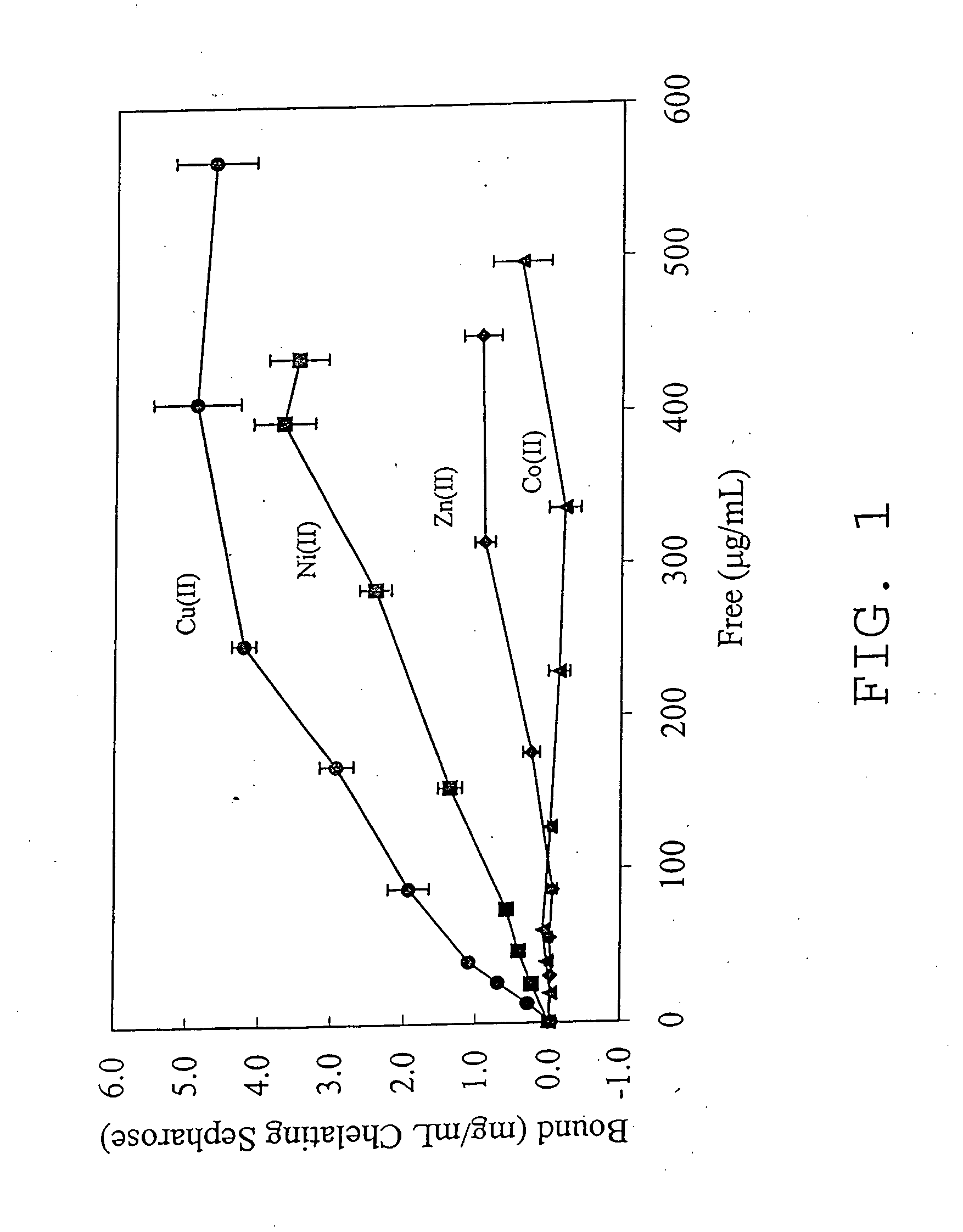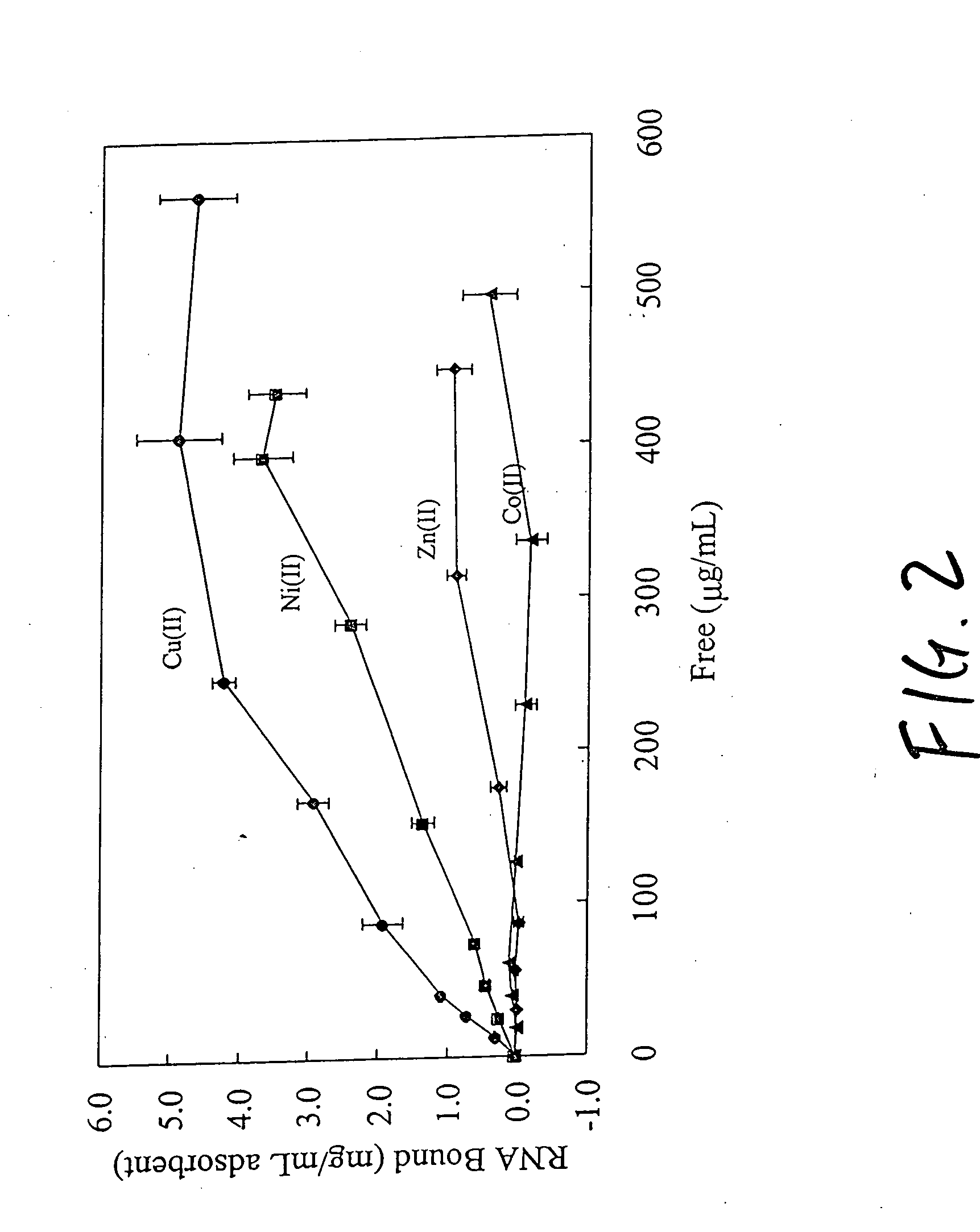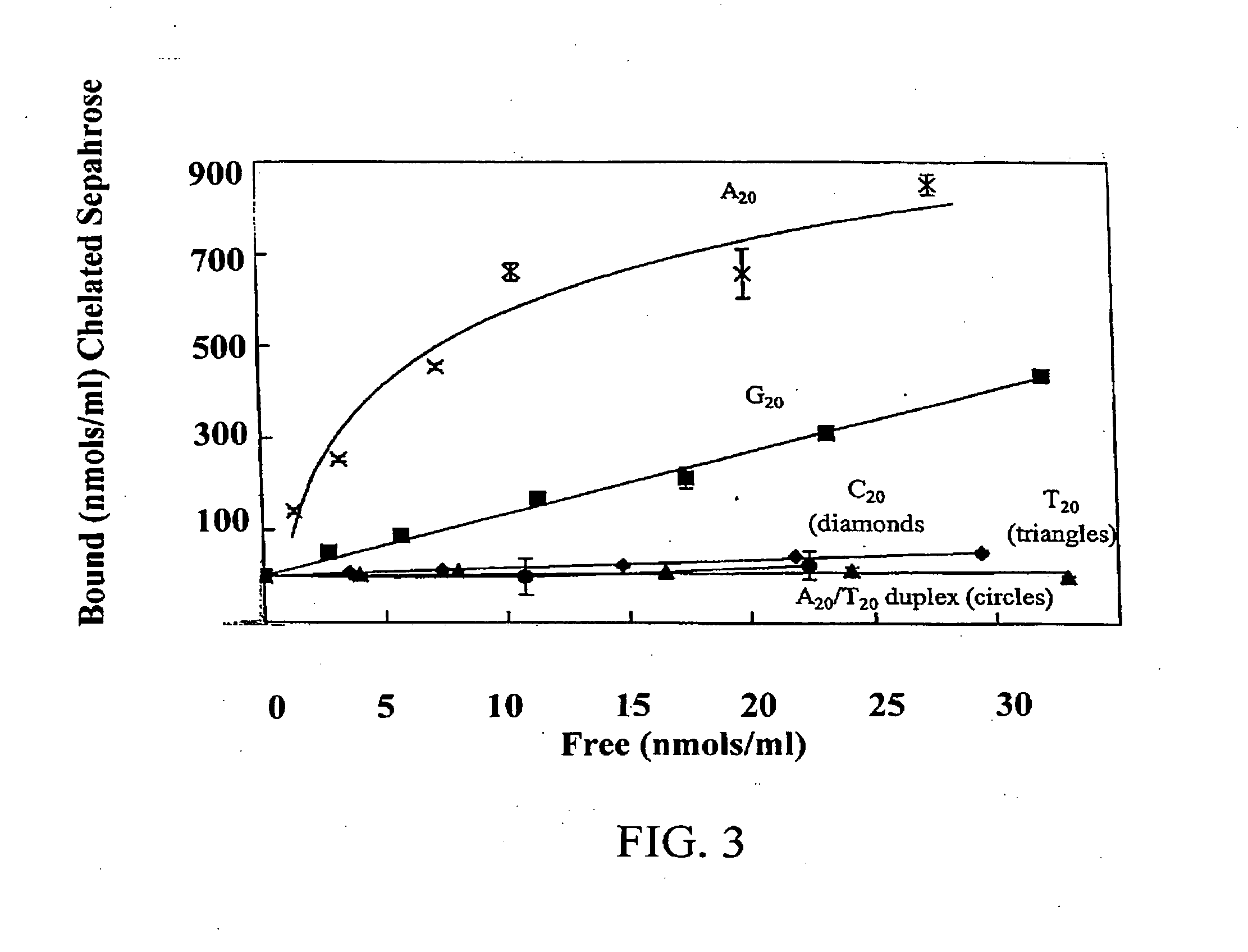Nucleic acid separation using immobilized metal affinity chromatography
a technology of immobilized metal and affinity chromatography, which is applied in the direction of sugar derivates, organic chemistry, chemistry apparatus and processes, etc., can solve the problem that imac has found very limited application in the purification of nucleic acids
- Summary
- Abstract
- Description
- Claims
- Application Information
AI Technical Summary
Benefits of technology
Problems solved by technology
Method used
Image
Examples
examples
[0205]Equilibrium Adsorption Isotherms 1
[0206]To test binding capacities and trends, equilibrium adsorption isotherms were run to find affinities of RNA and DNA to IMAC matrices. The first experiment ran was to distinguish the different binding affinities of RNA and double-stranded DNA. In the example, equilibrium isotherms were performed using Zn (II) charged IDA IMAC resin using total bakers yeast RNA and pBGS19Luxwt plasmid DNA. The resulting isotherms showed no apparent binding of the plasmid DNA, but a defined binding isotherm for bakers yeast RNA. This experiment represented was the first evidence of differential binding affinity to an IMAC reagent for single-stranded RNA and double-stranded DNA.
[0207]Next, binding isotherms were run using different divalent metal ions (Cu.sup.2+, Ni.sup.2+, Zn.sup.2+ and Co.sup.2+) and total bakers yeast RNA to determine the relative binding efficiencies. FIG. 1 shows the isotherms for each divalent metal ion. From the isotherms is it apparen...
PUM
| Property | Measurement | Unit |
|---|---|---|
| pH | aaaaa | aaaaa |
| volumes | aaaaa | aaaaa |
| pH | aaaaa | aaaaa |
Abstract
Description
Claims
Application Information
 Login to View More
Login to View More - R&D
- Intellectual Property
- Life Sciences
- Materials
- Tech Scout
- Unparalleled Data Quality
- Higher Quality Content
- 60% Fewer Hallucinations
Browse by: Latest US Patents, China's latest patents, Technical Efficacy Thesaurus, Application Domain, Technology Topic, Popular Technical Reports.
© 2025 PatSnap. All rights reserved.Legal|Privacy policy|Modern Slavery Act Transparency Statement|Sitemap|About US| Contact US: help@patsnap.com



